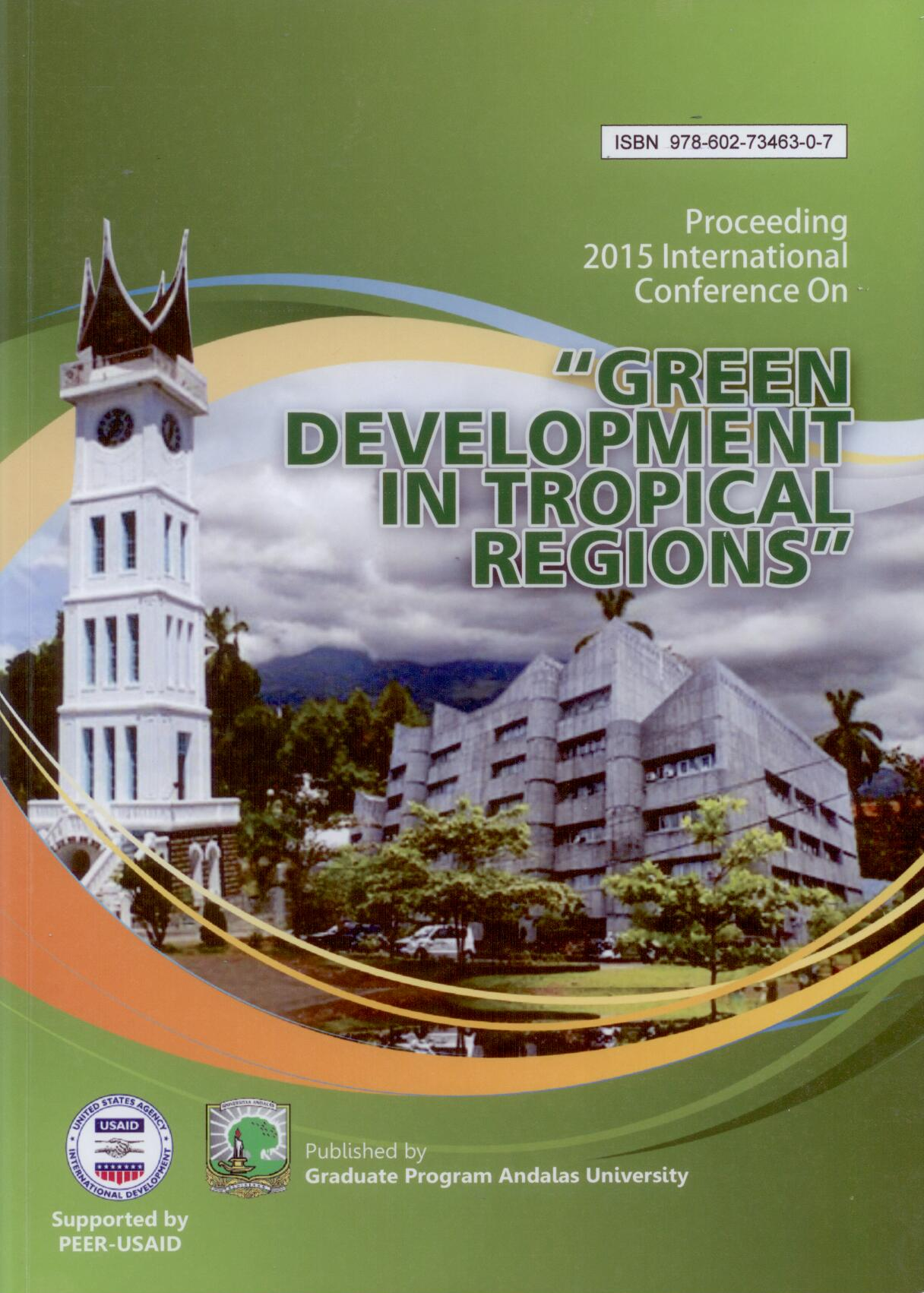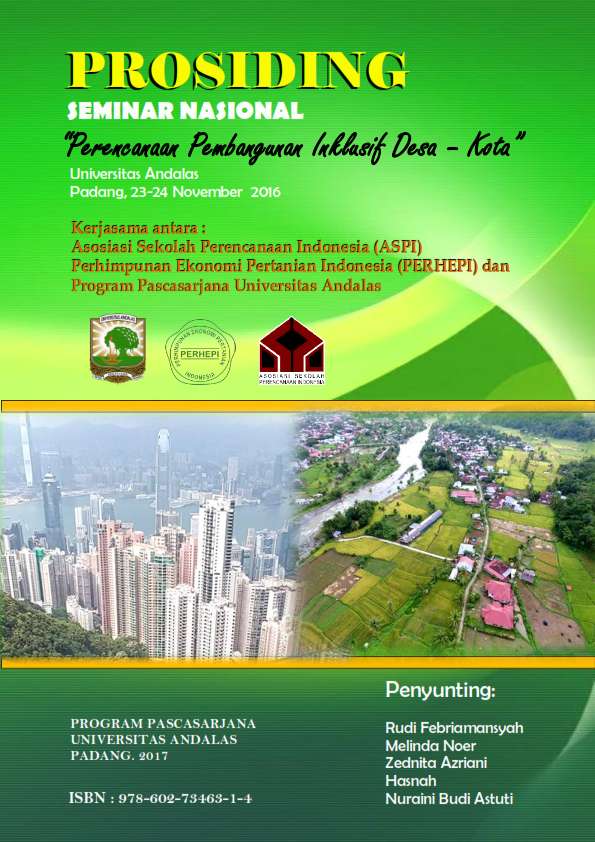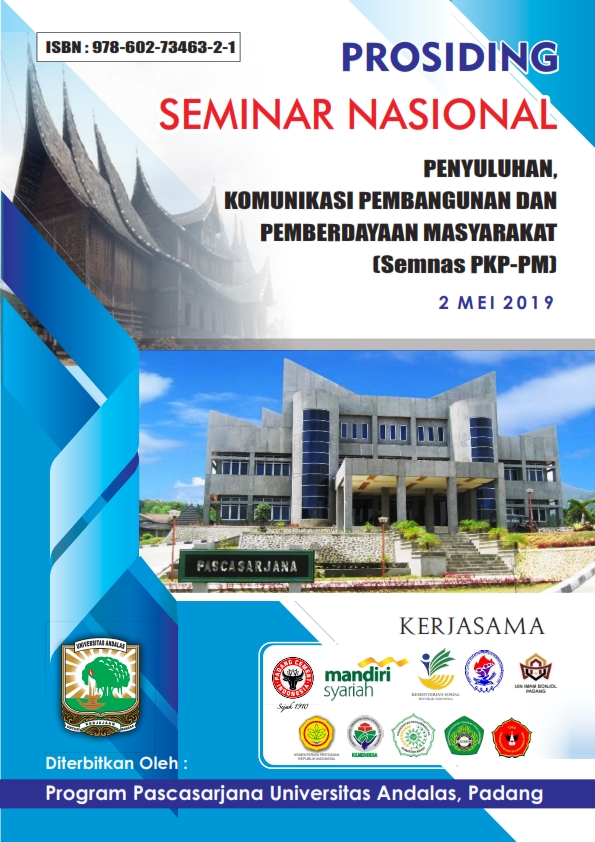
Prosiding (65)
RELATIVE ROLES OF CLIMATE AND SOCIETAL FACTORS INWATER SCARCITY AND FLOODINGIN SRI LANKA AND MALDIVESAND ITS IMPLICATIONS
Zeenas Yahiya
Foundation for Environment, Climate and Technology, c/o Mahaweli Authority Maintenance, Digana Village, Rajawella, Sri Lanka.
Corresponding author: Alamat email ini dilindungi dari robot spam. Anda memerlukan Javascript yang aktif untuk melihatnya.
ABSTRACT
Three cases that we have studies in Sri Lanka and Maldives illustrate the socio-economic factors and the role of climate change in water scarcity and flooding. The trade-offs, spatial and time scale issues and climate risk and sustainability shall be discussed. First, at a national and district scale in Sri Lanka, we find that there is a strong relationship between climate based drought incidences and drought disaster declarations and relief payments. The details of how these indices are derived and the cross-comparisons with disasters shall be presented. This case demonstrates that even in a country with political conflict, and with government systems under stress that climate drives drought disaster relief. Second, in a rapidly urbanizing region in Sri Lanka, we find that climate is not a driver of the rise in flooding in a sub-catchment (PingaOya) of the Mahaweli River. While there is a relationship between weather and flooding, the rising frequency of floods is not correlated with climate change. Rather anthropogenic activities and poor enforcement of regulations is the cause of floods. Third, in the Maldives, the new government is seeking to move away from climate dependence by encouraging its people to move from water sustenance through encouraging the young to migrate from the approximately 190 islands they inhabitto the HulhumaleIsland where it is constructing desalination plants to provide water. This means that there is higher level of dependence on water supply services. In November 2014 there was a week-long breakdown of the water supply.
PROFIT, PEOPLE AND PLANET: GREENING SCHOOL CURRICULUM THROUGH RECONTEXTUALIZING AGRICULTURE VALUES AND PRACTICES INTO EDUCATION FOR SUSTAINABLE DEVELOPMENT
Sang Putu Kaler Surata
Dept. of Biology Education, Faculty of Education and Teacher Training
Universitas Mahasaraswati Denpasar-Bali
Corresponding author : Alamat email ini dilindungi dari robot spam. Anda memerlukan Javascript yang aktif untuk melihatnya.; Alamat email ini dilindungi dari robot spam. Anda memerlukan Javascript yang aktif untuk melihatnya.
ABSTRACT
For more than a millenium, agricultural landscape system has played an important role in educating and training young generation about green development; however the role of this system is reduced drastically due of globalization school education curricula, that tend ignoring the student opportunities to learn from the local environment as well as their ancestral heritage. This paper seek to initiate discussion of education reform in addressing global challenges for future development. Ethnography approach was used to explore three programs of re-contextualization of agricultural values and practices into education for sustainable development (ESD). It was found that greening school curriculum with locally relevant and culturally appropriate may contribute to achieve three pillars of ESD: profit, people and planet. There thus, education reform should be focused on place-based ESD to encourage youth for using their local cultures and practices as source of inspiration and motivation in building the future.
Keywords: local environment, education reform, global challenges and building the future.
RESILIENT FLOOD-BASED FARMING SYSTEMS IN THE MEKONG DELTA
Nguyen Van Kien
Director of Research Centre for Rural Development of An Giang University, Vietnam
Corresponding author : Alamat email ini dilindungi dari robot spam. Anda memerlukan Javascript yang aktif untuk melihatnya.
ABSTRACT
This paper investigate resiliency of the floating rice-based farming system overtime. Resilience is defined as “the capacity of a system” to cope with disturbance, learn from changes and creativity. This paper will explore the link between social-ecological resilience in the context of preservation and development of the floating rice based farming systems in the Mekong Delta. In particular, this floating rice farming system can adapt well to seasonal flood event, recover inland fish, maintain the nutritional sources for small farm holders, and does not require modification of natural resources such as infrastructure (dikes), and recycling of natural resources, and make use of full ecosystem services from the seasonal flood events in the Mekong Delta. Early pioneers during the Nguyen Dynasty (1705), traditional people harvested floating rice in the lowland back swamps, caught fish in the floodplains and hunt wild animals for home consumption. During the colonial period (1858-1954) the floating rice was expanded in the flooded areas of Vietnamese Mekong Delta. Since short-term high yield rice varieties were introduced into the Mekong Delta in the late 1960s, it quickly replaced floating rice-based agro-ecological systems by using massive irrigation and systems of protective polders. In 1974, there were 0.5 million hectares of the floating rice in the VMD, but by 2012, this dropped to 50 hectares (ha), found in Vinh Phuoc and Luong An Tra communes of Tri Ton district in An Giang province. Research Center for Rural Development of An Giang University has carried out a series of research and development projects to co-design with community and rural leaders to recover this farming system since 2013. The research shows higher economic return, protects biodiversity, and recovers inland fishery for food security. In contrast, intensive rice farming systems show fewer resiliencies because they create environmental costs.
Key words: Floating rice, flood, Mekong delta, social-ecological resilience
CLIMATE VARIABILITY AND CHANGE IN THE TROPICAL INDIAN OCEAN ISLANDS :IMPLICATIONS FOR WATER SECURITY AND GREEN DEVELOPMENT
Lareef Zubair
Foundation for Environment, Climate and Technology, c/o Mahaweli Authority Maintenance, Digana Village, Rajawella, Sri Lanka.
Corresponding author: Alamat email ini dilindungi dari robot spam. Anda memerlukan Javascript yang aktif untuk melihatnya.
ABSTRACT
Climate variability and change are of profound importance across the Indian Ocean but it has not been studied as much as in other regions;nor has the information been adequately harnessed to support green or sustainable development for its island inhabitants. Through our PEER projects, we have worked towards understanding climate variability from intra-seasonal to decadal time scales for the tropical Indian Ocean. Though studying phenomenon such as the Madden Julian Oscillation we are able to operationalize intra-seasonal climate predictions for Sri Lanka and Maldives. Through studying phenomenon such as El Nino and Indian Ocean Dipole, we developed seasonal climate predictions. Through study of climate change projections and decadal variability, our ongoingPEER project shall characterize near-term climate change projections. We also developed tools for monitoring ongoing climate variability. All of this information is provided at a weekly, monthly and seasonal interval to users in the water resources, agriculture, disaster risk and infectious disease sectors in Sri Lanka, Maldives and recently to Comoros. In addition, through other projects, our climate work extends across the Indian Ocean from the littoral islands of East Africa and South-East Asia. We address the use of climate information towards sustainable development in sectors such as Fisheries, Tea and Coconut plantations, Malaria and Dengue risk, Human-Elephant-Conflict, and preserving lagoon ecosystems and fresh water resources.
LAKE TAAL : SUSTAINING NATIVE BIODIVERSITY IN THE FACE OF AQUACULTURE, CLIMATE CHANGE AND NON-NATIVE SPECIES
Rey Donne S. Papa
Department of Biological Sciences, Research Center for the Natural and Applied Sciences and The Graduate School, University of Santo Tomas, Manila, Philippines 1015
Corresponding author: Alamat email ini dilindungi dari robot spam. Anda memerlukan Javascript yang aktif untuk melihatnya. ; Alamat email ini dilindungi dari robot spam. Anda memerlukan Javascript yang aktif untuk melihatnya.
ABSTRACT
Lake Taal is an interesting freshwater ecosystem to study. The complex interactions of its geological origins, its location, and the presence of the world’s lowest active volcano led to the evolution of a diverse flora and fauna. Its fisheries are integral to local communities and have sustained them for centuries. In the past three decades, however, the biodiversity of Lake Taal has been threatened by aquaculture. This has eventually led to poorer water quality and alteration of species’ structure. Fewer scientific research studies on Lake Taal have been published, which has also led to a lack of sound management policies that would have helped alleviate the current problems of the lake. This research study is focusing on determining the range of Lake Taal’s biodiversity and will shed light on the impacts of aquaculture, newly introduced species, and climate change on the native flora and fauna of Lake Taal. The findings of this study will be compared to the existing records, and significant differences are expected, given the dynamism in taxonomy and systematics, as well as the newly available technology. The research team is collaborating with experts from the California Academy of Sciences (CAS) who are currently documenting the biodiversity of the Verde Island Passage. Lake Taal’s proximity and close geographic link makes it highly possible for Lake Taal to be home to an equally diverse set of organisms.
The researchers anticipate that this project will open opportunities for scientifically sound recommendations to be integrated in future lake conservation plans. The research results will be shared through peer-reviewed publications, presentations, community discussions, and museum exhibits. Since the evaluation of the current state of Lake Taal’s biodiversity is already long overdue, much effort is being put into research result dissemination through valid avenues to ensure that other scientists and policy makers would have access to reliable data on Lake Taal’s biodiversity. This study will also ensure that the surrounding communities in the area would gain a better understanding and appreciation of the lake, which plays a significant role in shaping their livelihoods. The outreach and education activities are being designed to help communities integrate responsible aquaculture processes into lake conservation efforts. A museum exhibit on the biodiversity of Lake Taal is planned to help increase public awareness on the importance of Lake Taal as a biodiversity hotspot, given how its native flora and fauna must cope with external pressures from anthropogenic and natural sources. The involvement of young scientists will help build a more educated and scientifically inclined community. This presentation highlights the current status of the project, after a year of full implementation, and will also give a run-down of on-going and upcoming events in relation to this project.
CONSUMER DEMAND FOR CLEAN PRODUCTS; THE CHANGING INDONESIAN POULTRY INDUSTRY
Ian Patrick
Director, Institute for Rural Futures
University of New England, Australia
ABSTRACT
Indonesian consumers of poultry products are increasingly demanding cleaner, greener products that are not only nutritious but also produced under safe and healthy conditions. Increasing wealth, value chain development and disease scares such as Bird Flu and Newcastle disease are leading to contractor companies beginning to encourage their partners to produce a ‘cleaner’ product. A survey undertaken in three provinces (Bali, West Java and South Sulawesi) indicated that consumers would be prepared to pay between 10 and 20% above the regular price for broiler chicken, if they could be sure that these were produced on farms that met approved biosecurity standards. The ACIAR funded project then tested the market for these products in two of the provinces and found that demand for ‘Healthy Farm’ eggs and meat was indeed significant. In a supermarket in Bali during the first year of the trial, approximately 20% of the chickens sold were under the ‘Healthy Farm’ logo at an average price 12% higher than the regular product. Irrespective of the actual quality of the product, consumers were, and are prepared to pay more for poultry products produced in cleaner, greener environments. This will continue in the future.
CLIMATE CHANGE IN SOUTHEAST ASIA AND ITS RELATION WITH ADAPTIVE NATURAL RESOURCES MANAGEMENT
Nestor T. Baguinon
Professor in Forest Ecology University of the Philippines Los Banos
ABSTRACT
Southeast Asia (SEA)is rich in natural resources. Natural resources (NR)are products of evolution henceitsuniquebiota (flora and fauna). Marine natural resourcesinclude pelagic, coral reef and seagrass beds.The estuarylinks both freshwater and marine resources. At the back of mangroves and the estuary are forests.Forests vary with soil, climate, slope and elevation. Biogeographically, SEA is unique being a subset of Indoaustralasia. Itsbiota are mainly descendedfrom Gondwanian ancestors,e.g. fromIndia (e.g. Dipterocarpaceae, primates) and Australia(e.g. Podocarpaceae, parrots).However,montane/mossy forests speciesareof Eurasianorigin (e.g. Fagaceae, rodents). As background, this paper reviews SEAn climate at a millenial scope, i.e. Last Glacial Maximum (LGM) c.18,000 yrs B.P. to present. Hunting-gathering Negroids such as Australian aborigines, Papuans, Melanesians, Negritos(Philippines and Malay Peninsula) walked from Africa to archipelagic SEA,c. 50,000 yrs B.P., but about 4,000 yrs B.P.agricultural Austronesians arrived by boat irreversibly convertingforests into human settlements/farms. SEAn climates matchthe culture of ethnic groups.NR providesthem ecosystem services.Climate is thelong-term mean atmospheric condition of anygiven place, weather isits daily expression. Weather extreme is the term when the expression is abnormal, e.g. typhoons. During Glaciations, landbridges connected Continental SEA with Archipelagic SEA.It allowed overland migration of biota+humans. After the LGM, warm Interglaciationabruptly melted glaciers causing sea level rise. Sundaland became archipelagic again.Alternating Glaciation and Interglaciation is being driven by the Milankovitch Cycles. In Glaciationdeserts expand whileforestsretreat. The reverse is true for Warm Interglaciation although short drought episodescan occur as it did inAngkor Wat, Cambodia. Walker Circulation and El Nino Southern Oscillation (ENSO) together explain other droughts.Ifugao rice terraces (Payoh) coupled to natural forests (Muyong) circumventdrought uncertaintieswith forestsreliably supplyingwater.Coupled forests+farmsisboth CC adaptation (CCA) and mitigation (CCM). Drought is also a function of theso-called Little Ice Age(LIA). Stoppageof the Thermohaline Circulation initiates LIA.It occurredduringthe years1650, 1770 and 1850 after the Medieval Warming. In 1850, the Industrial Revolution was already spewing greenhouse gases (GHG)hence theAnthropogenic Climate Change (ACC) problem. Atmospheric GHGis mounting as per Mauna Loa, Hawaii Keeling Curve (1960-2015). Aside from ACC,exponential human population growth (HPG) and deforestation (DF) are closely knit problems. Under a business-as-usual scenario, ACC will destroy natural resources and makes people vulnerable to ACC extreme events. This paper presents a systems-approach solutionto ACC, HPG and DF in anylandscape (e.g. reef to ridge) under one adaptive management.It includes participatory landscape benchmarking (GIS as tool), land-use plan (coupled biodiversity corridors+agroforestry), IEC, renewable energy cooperative, M&E, fine-tuning of CCA + CCM.
Keywords: Nature, Man, Austronesian, biosphere, noosphere, anthropocentrism, alienation, anarchy, tragedy of the commons, limits to growth, IEC, capacity-building, GIS benchmark, conflict resolution, land-use plan, knowledge management, biodiversity corridors, agroforestry cooperatives, ecological covenant, adaptive/ecological governance, sustainable economics, M&E, green development fine-tuning.
PROSIDING SEMINAR INTERNATIONAL 2015 "GREEN DEVELOPMENT IN TROPICAL REGIONS"
Written by admin





